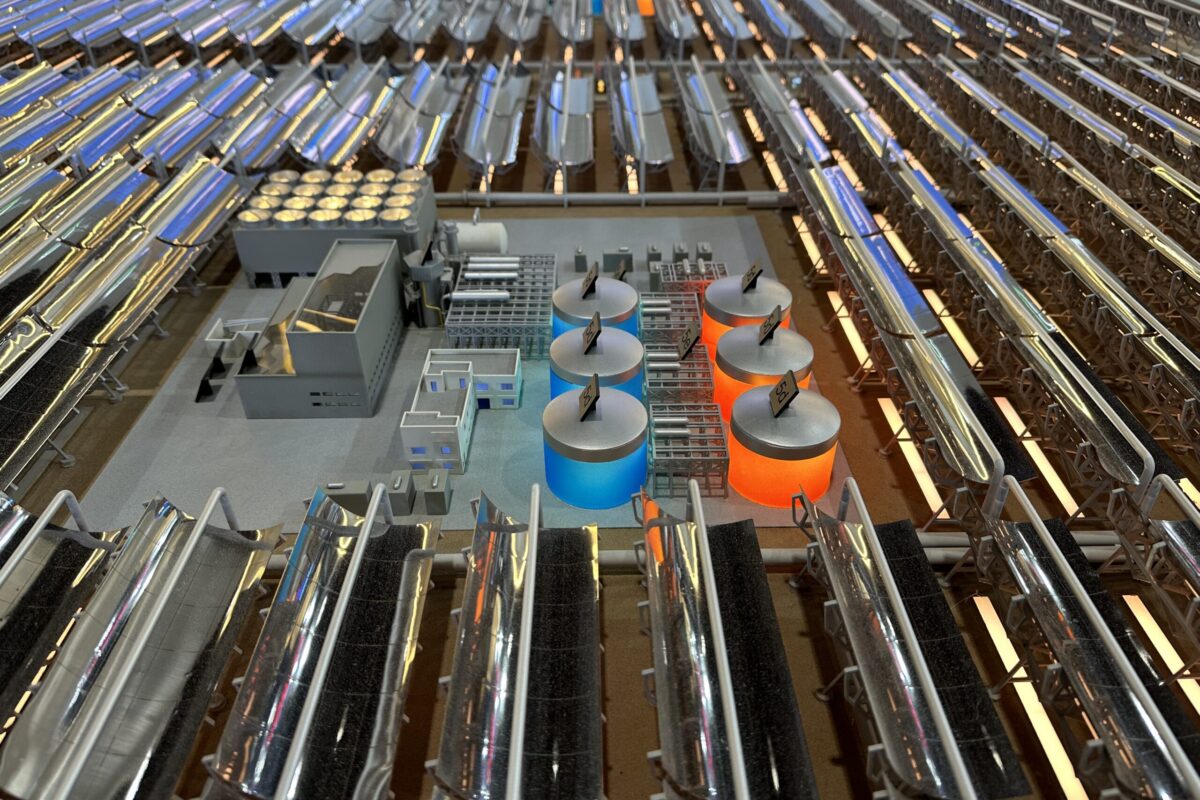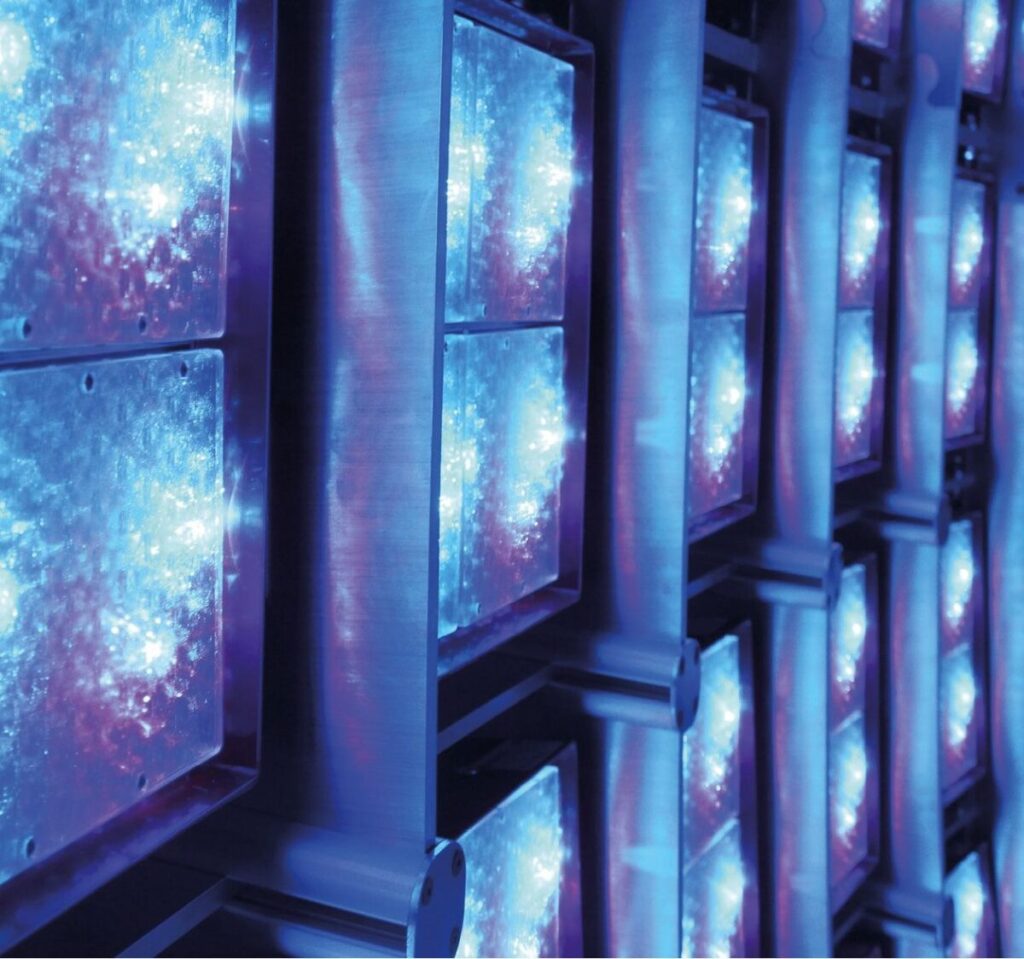Printed edition 24/10 from pv magazine
Solar panel prices have fallen rapidly since September 2023. In Europe, regular solar panels reached values of around €0.14 ($0.23)/W of generation capacity in December 2023, compared to around €0.30/W at the beginning of that year. In 2024, prices will only continue to fall, even for the best-performing products.
Despite the downward trend, the figures still represent a significant turnover. In Germany alone, based on an average value of €0.24/W, €3.6 billion worth of solar panels were sold by wholesalers to end customers in 2023, including price increases. This resulted in a nationwide installation of almost 15 GW of solar generation capacity.
That high capacity and turnover, combined with the fact that Germany accounted for just under 4% of the global solar energy market in 2023, should be taken into account when assessing the statistical evaluation by CalLab PV Modules of the Fraunhofer Institute for Solar energy systems (ISE) in Freiburg, Germany. The resulting paper, “PV module rated power compared to measured power in the calibration laboratory: is there an increasing trend toward excessive rated power?” revealed clear indications that the power specifications on the module nameplates are often too high.
Daniel Philipp, head of the module characterization and reliability department and manager of the test and calibration laboratory at Fraunhofer ISE, together with his colleagues Martin Kaiser and Ulli Kräling, analyzed approximately 68,500 module power measurements carried out since 2012. The researchers carefully removed data that could skew the results. For example, they excluded modules with unknown serial numbers and multiple measurements from the same specimens, such as those from aging tests. Only modules with crystalline silicon solar cells were included, leaving 6,349 data points.
The results showed that between 2012 and 2016 there were indeed differences between the reported nominal outputs and the results determined by Fraunhofer ISE, but the difference was on average less than 1%. In 2016, the average deviation between the power stated by the manufacturer and the power measured by Fraunhofer ISE was 0.4%. Since then, the deviation rate has increased by 1.8 percentage points. In 2023, the average deviation was 2.2%. In fact, 80% of the data points evaluated were within a range of up to approximately 4% negative deviation. Positive deviations – when the power measured at ISE is higher than taken into account – were virtually non-existent in 2023, despite this being common in the past (see graph below). In other words, customers would get less for the same nominal power they purchase.
Surprised questions
If these results are applied to solar panel sales in Germany, it means that an estimated €80 million to €140 million has been overpaid in the wholesale sector. This would result in a deficit of several billion euros for the world market. Or profit – that’s a matter of perspective.
If the declared nominal power for a particular module is 2% higher than the actual value, this means 8 W for a 400 W module and 12 W for a 600 W module.
Manufacturers usually sell their products in power steps of 5 W, because for technical reasons it is not possible to manufacture modules with exactly the same power in series production. This means that they are measured at the factory with a solar simulator, or flash, and then divided into corresponding classes based on watt power – for example from 405 W to 410 W, or 415 W and 420 W to 425 W. A positive tolerance is common here, at least with reputable manufacturers: for a module stated as 400 W, 400 W or more must be measured. However, if there is a deviation of 2% or more, a module will slide into the 405 W or even 410 W category.
You could say that the enormous price drop for solar panels over the past year has significantly reduced any measurement errors in practice. But apart from the fact that incorrectly stated efficiency is a matter of principle, solar installers can face problems. After all, they often calculate an expected solar energy yield for their customers and the reference value for this calculation is the nominal power of a panel. Solar installers are also the first point of contact for customers when it comes to performance guarantees. If modules deliver 2% to 4% less than promised from the start, inspections will lead to more frequent complaints after a few years of use.
Large customers, especially developers of large-scale solar projects, routinely conduct their own tests and send random samples to a testing laboratory such as Fraunhofer ISE. Philipp reported that tests in the years leading up to 2024 often prompted puzzled questions from module manufacturers when the determined values were lower than those measured on the production line. “In some cases, manufacturers were clearly unaware of the scale of the problem,” he said. Naturally, manufacturers also have their own measured values checked and adjust their power measurements on the production line in a test laboratory.
Competition for customers
Is this a matter of willful ignorance? Manufacturers could have suspected the problem. The fact that different laboratories have come to different conclusions has been a topic of discussion in the industry for some time, at least behind closed doors. However, some degree of deviation is natural.
Even the very best solar simulator has a certain measurement tolerance, and there are other subtleties that can cause deviations in the results. CalLab PV Modules, one of the few solar panel calibration laboratories in the world, regularly compares its measurements with those of the German National Metrology Institute (PTB). These comparisons, and occasional comparisons with other calibration laboratories, also reveal differences. However, these differences are always well below 1% and show approximately the same degree of deviation in both the minus and plus ranges.
As of 2024, comparisons between the measurements made at Fraunhofer ISE with the reported power ratings of manufacturers have shown a significant and consistently increasing deviation of the power output figures, going back several years, and always towards more negative values.
There could be another explanation: if differences occur in the actual power output recorded by testing labs, solar manufacturers can of course act accordingly. A manufacturer who receives a 500 W certificate for its module in laboratory A, but 510 W in laboratory B, may be tempted to switch to B – especially if its competitors do the same.
There are certainly signs of a counter-movement among manufacturers. Philipp said manufacturers are increasingly asking for references from Fraunhofer ISE to verify results.
Even if smaller customers don’t have the option for follow-up checks, this could indicate a trend in the positive direction, as might become known if a module manufacturer regularly attracted negative attention.
“We will continue to monitor developments,” Philipp said.
This content is copyrighted and may not be reused. If you would like to collaborate with us and reuse some of our content, please contact: editors@pv-magazine.com.
Popular content


